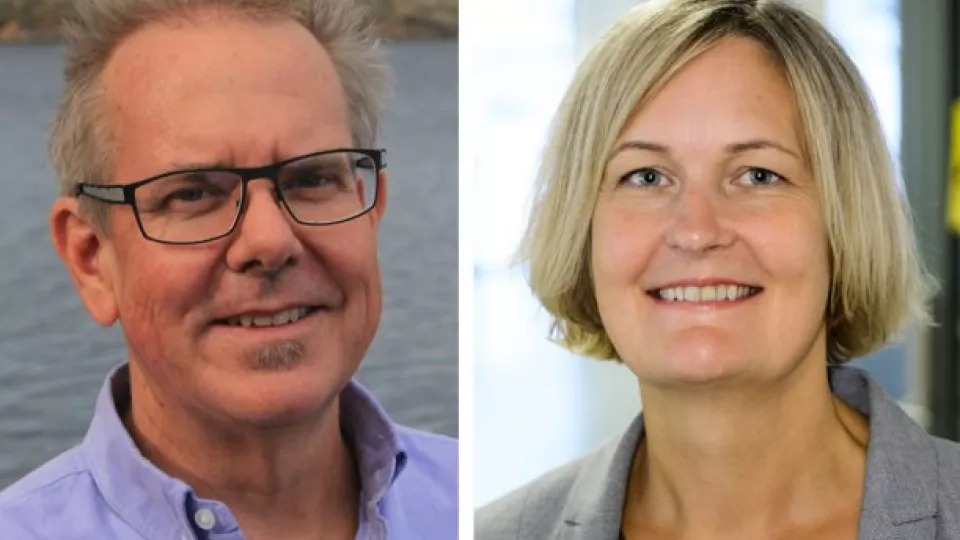Malin Parmar, professor of Cellular Neuroscience at Lund University, will lead a five-year project, which has now been granted almost SEK 22 million by the Knut and Alice Wallenberg Foundation. Together with Tomas Björklund, also at Lund university, Andras Simon and Thomas Perlmann from the Karolinska Institute, they will develop a new method for replacing damaged and dead neurons by capturing the brain’s intrinsic ability to form new nerve cells.
Neurodegenerative diseases, such as Parkinson’s disease and Alzheimer’s, and brain injury such as stroke, in which nerve cells in the brain die and cannot be regenerated, affect increasing numbers of people due to the fact that we live longer. At present there is no treatment that can replace the lost cells.
“We are already developing other important and very interesting new methods for repairing injuries in the brain, such as cell transplantation and methods for growing nerve cells from stem cells. However, these are problematic for both ethical and practical reasons to some extent, as well as complicated and expensive. We therefore have a considerable need to develop new methods for repairing injuries in the brain”, says Malin Parmar.
“In this project we will develop a new and exciting alternative strategy for replacing damaged and dead nerve cells by utilising the brain’s innate regenerative potential. The strategy is based on utilising the brain’s own glial cells and directing these to create new nerve cells. Using this approach avoids the complicated process of transplanting cells from outside the body.”
The researchers will conduct comparative studies using unique models from self-healing salamanders and in mice, which do not have the same ability to generate new cells, in order to find out why the new formation of nerve cells is reactivated by injury in salamanders, but not in mammals.
Subsequently, the researchers will modify these mechanisms to also achieve new formation of nerve cells in mice, and then evaluate the maturity, functionality and integration of the nerve cells in unique pre-clinical models with human cells.
“Our studies open up entirely new possibilities for controlling the new formation of cells directly in the brain”, concludes Malin Parmar.
Daniel Conley, a professor of biogeochemistry at Lund University, has been awarded SEK 34 million for a five-year project on the global silicon cycle. The project will be implemented in collaboration with researchers from Linnaeus University, and will investigate changes in the silicon cycle over millions of years.
“The cycling of silicon is of crucial significance to our planet’s climate and for biological productivity”, says Daniel Conley.
When silicon in the bedrock breaks down, the decomposition process uses carbon dioxide, which reduces the amount pf carbon dioxide in the atmosphere. In seawater, silicon is crucial for how many diatoms can survive, as these phytoplankton need large amounts of silicon for their hard, porous cell walls, called frustules.
Diatoms may seem tiny and inconspicuous, but they absorb around 53 million tons of carbon every day, in the form of carbon dioxide, through photosynthesis. This figure can be compared with human use of fossil fuels, which releases around 21 million tons of carbon per day. When the diatoms die and sink to the sea bed, they play an important role in taking carbon dioxide with them from the surface water down into the depths of the ocean.
In the new project, Daniel Conley and his colleagues will investigate how the diatoms and other phytoplankton may have contributed to regulating silicon levels in the oceans over the past billion years. The researchers have identified three periods of time which are highly likely to have been marked by tangible but largely unexplored changes in the cycle of silicon in the oceans. The oldest period is the transition from the dominance of bacteria to the photosynthesis of early phytoplankton, from 1 000 to 500 million years ago. The next period concerns the development of diatoms and their relatives about 200 million years ago. The last period runs from 66 million years ago to the present day, with major variations in the levels of silicon in the oceans through run-off from land.
“This knowledge will enable us to understand and predict how future environmental changes will affect both the climate and the oceans’ productivity”, says Daniel Conley.
Large grants awarded to research on brain repair and diatoms

Lund University has received SEK 56 million from the Knut and Alice Wallenberg Foundation to finance two research projects. One will aim to find innovative ways of repairing an injured brain, and the other will investigate the crucial effect silicon has on the climate.
Latest news
Categories